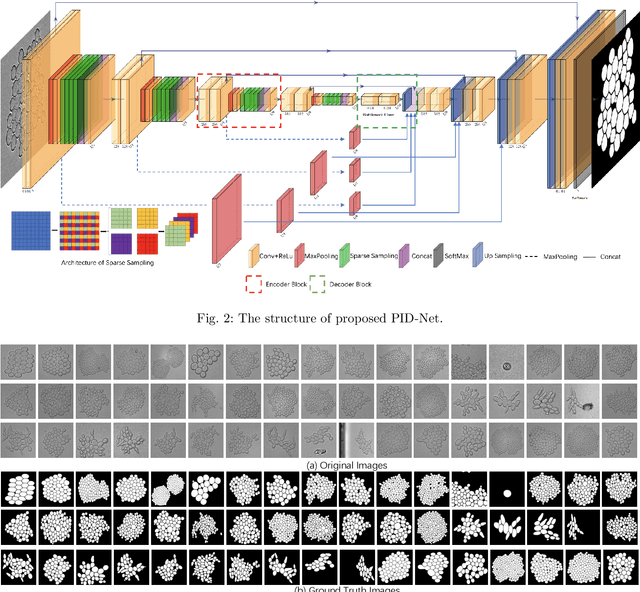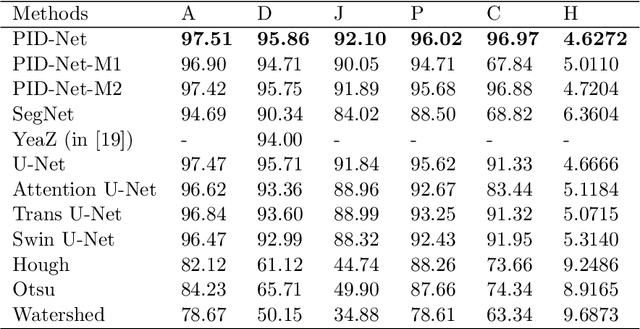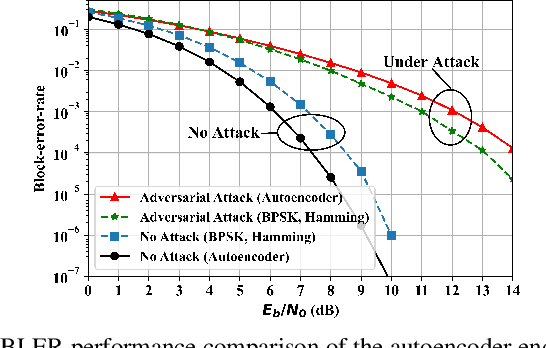Yu-Dong Yao
Plug-and-Play AMC: Context Is King in Training-Free, Open-Set Modulation with LLMs
May 06, 2025Abstract:Automatic Modulation Classification (AMC) is critical for efficient spectrum management and robust wireless communications. However, AMC remains challenging due to the complex interplay of signal interference and noise. In this work, we propose an innovative framework that integrates traditional signal processing techniques with Large-Language Models (LLMs) to address AMC. Our approach leverages higher-order statistics and cumulant estimation to convert quantitative signal features into structured natural language prompts. By incorporating exemplar contexts into these prompts, our method exploits the LLM's inherent familiarity with classical signal processing, enabling effective one-shot classification without additional training or preprocessing (e.g., denoising). Experimental evaluations on synthetically generated datasets, spanning both noiseless and noisy conditions, demonstrate that our framework achieves competitive performance across diverse modulation schemes and Signal-to-Noise Ratios (SNRs). Moreover, our approach paves the way for robust foundation models in wireless communications across varying channel conditions, significantly reducing the expense associated with developing channel-specific models. This work lays the foundation for scalable, interpretable, and versatile signal classification systems in next-generation wireless networks. The source code is available at https://github.com/RU-SIT/context-is-king
DenoMAE: A Multimodal Autoencoder for Denoising Modulation Signals
Jan 20, 2025Abstract:We propose Denoising Masked Autoencoder (Deno-MAE), a novel multimodal autoencoder framework for denoising modulation signals during pretraining. DenoMAE extends the concept of masked autoencoders by incorporating multiple input modalities, including noise as an explicit modality, to enhance cross-modal learning and improve denoising performance. The network is pre-trained using unlabeled noisy modulation signals and constellation diagrams, effectively learning to reconstruct their equivalent noiseless signals and diagrams. Deno-MAE achieves state-of-the-art accuracy in automatic modulation classification tasks with significantly fewer training samples, demonstrating a 10% reduction in unlabeled pretraining data and a 3% reduction in labeled fine-tuning data compared to existing approaches. Moreover, our model exhibits robust performance across varying signal-to-noise ratios (SNRs) and supports extrapolation on unseen lower SNRs. The results indicate that DenoMAE is an efficient, flexible, and data-efficient solution for denoising and classifying modulation signals in challenging noise-intensive environments.
An application of Pixel Interval Down-sampling (PID) for dense tiny microorganism counting on environmental microorganism images
Apr 04, 2022



Abstract:This paper proposes a novel pixel interval down-sampling network (PID-Net) for dense tiny objects (yeast cells) counting tasks with higher accuracy. The PID-Net is an end-to-end CNN model with encoder to decoder architecture. The pixel interval down-sampling operations are concatenated with max-pooling operations to combine the sparse and dense features. It addresses the limitation of contour conglutination of dense objects while counting. Evaluation was done using classical segmentation metrics (Dice, Jaccard, Hausdorff distance) as well as counting metrics. Experimental result shows that the proposed PID-Net has the best performance and potential for dense tiny objects counting tasks, which achieves 96.97% counting accuracy on the dataset with 2448 yeast cell images. By comparing with the state-of-the-art approaches like Attention U-Net, Swin U-Net and Trans U-Net, the proposed PID-Net can segment the dense tiny objects with clearer boundaries and fewer incorrect debris, which shows the great potential of PID-Net in the task of accurate counting tasks.
A Robust Adversarial Network-Based End-to-End Communications System With Strong Generalization Ability Against Adversarial Attacks
Mar 03, 2021



Abstract:We propose a novel defensive mechanism based on a generative adversarial network (GAN) framework to defend against adversarial attacks in end-to-end communications systems. Specifically, we utilize a generative network to model a powerful adversary and enable the end-to-end communications system to combat the generative attack network via a minimax game. We show that the proposed system not only works well against white-box and black-box adversarial attacks but also possesses excellent generalization capabilities to maintain good performance under no attacks. We also show that our GAN-based end-to-end system outperforms the conventional communications system and the end-to-end communications system with/without adversarial training.
IoT Platform for COVID-19 Prevention and Control: A Survey
Oct 29, 2020



Abstract:As a result of the worldwide transmission of severe acute respiratory syndrome coronavirus 2 (SARS-CoV-2), coronavirus disease 2019 (COVID-19) has evolved into an unprecedented pandemic. Currently, with unavailable pharmaceutical treatments and vaccines, this novel coronavirus results in a great impact on public health, human society, and global economy, which is likely to last for many years. One of the lessons learned from the COVID-19 pandemic is that a long-term system with non-pharmaceutical interventions for preventing and controlling new infectious diseases is desirable to be implemented. Internet of things (IoT) platform is preferred to be utilized to achieve this goal, due to its ubiquitous sensing ability and seamless connectivity. IoT technology is changing our lives through smart healthcare, smart home, and smart city, which aims to build a more convenient and intelligent community. This paper presents how the IoT could be incorporated into the epidemic prevention and control system. Specifically, we demonstrate a potential fog-cloud combined IoT platform that can be used in the systematic and intelligent COVID-19 prevention and control, which involves five interventions including COVID-19 Symptom Diagnosis, Quarantine Monitoring, Contact Tracing & Social Distancing, COVID-19 Outbreak Forecasting, and SARS-CoV-2 Mutation Tracking. We investigate and review the state-of-the-art literatures of these five interventions to present the capabilities of IoT in countering against the current COVID-19 pandemic or future infectious disease epidemics.
 Add to Chrome
Add to Chrome Add to Firefox
Add to Firefox Add to Edge
Add to Edge